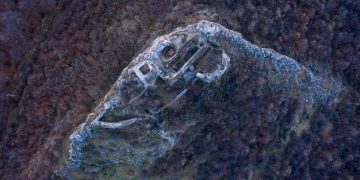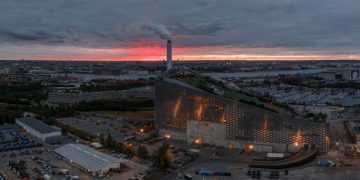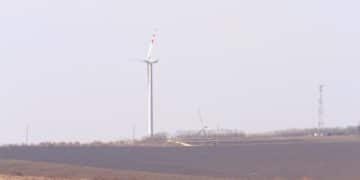Carbon Capture Breakthrough: 45% Emission Reduction in US Coal Plants – Enough?
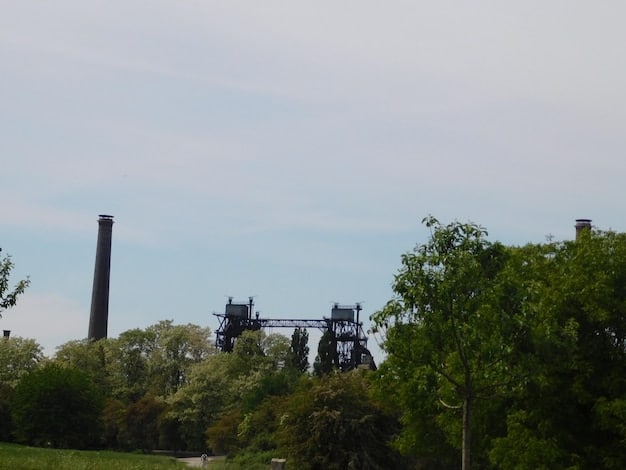
A new carbon capture technology implemented in US coal plants has demonstrated a significant 45% reduction in emissions, raising questions about its potential impact and scalability in addressing climate change.
A groundbreaking carbon capture technology is making waves in the US, showcasing a remarkable 45% reduction in emissions from coal plants. But the big question remains: is this enough to truly make a difference?
Carbon Capture Technology: A Game Changer for US Coal Plants?
The United States has long grappled with the environmental impact of its coal-fired power plants. Now, a new carbon capture technology promises a significant breakthrough, demonstrating a 45% reduction in emissions. This development has sparked both excitement and debate about the future of coal energy in a climate-conscious world.
This technology aims to capture carbon dioxide (CO2) emissions directly from the flue gas of coal plants, preventing them from entering the atmosphere. But is this enough to truly mitigate the environmental damage of coal, or is it simply a Band-Aid solution?
How Does Carbon Capture Technology Work?
Carbon capture technology encompasses a variety of methods designed to separate CO2 from other gases produced by industrial processes. The captured CO2 can then be stored underground (geological storage) or used in other applications (carbon utilization).
One common approach involves using solvents to absorb CO2 from the flue gas. The solvent is then heated to release the CO2, which is compressed and prepared for storage or use.
- Absorption: Chemical solvents capture CO2 from flue gases.
- Separation: The CO2 is then released from the solvent.
- Compression: Finally, the CO2 is compressed for transport and storage.
The success of this technology hinges on its ability to efficiently and cost-effectively capture CO2, as well as the availability of suitable storage sites or utilization pathways.
In conclusion, carbon capture technology offers a promising avenue for reducing emissions from coal plants, but its long-term viability depends on addressing key challenges related to cost, efficiency, and storage.
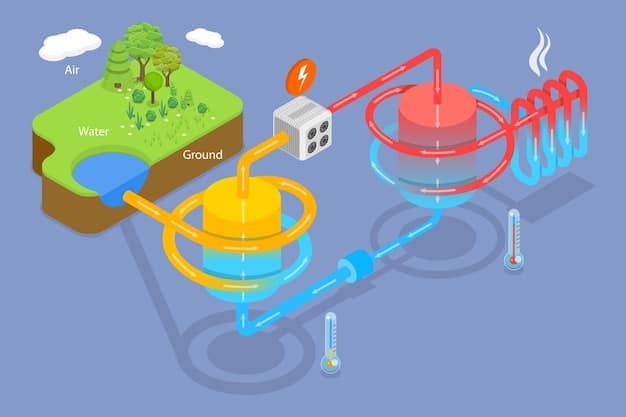
The Promise of 45% Emission Reduction: A Closer Look
The claim of a 45% emission reduction is certainly eye-catching. But what does this figure really mean, and how was it achieved? Let’s delve into the specifics of this new technology and its performance in US coal plants.
This reduction refers specifically to the amount of CO2 captured from the plant’s flue gas stream. It doesn’t account for emissions associated with the production and transportation of materials used in the capture process itself.
What are the Key Factors Enabling This Reduction?
This level of reduction in carbon emissions is influenced by several factors, the technology used being key, along with efficiency improvements, and how well it integrates in existing power plants.
Additionally, the type of coal used in the power plant and the overall efficiency of the plant’s operation play a role in the final emissions reduction figure.
- Advanced Solvents: The usage of highly efficient CO2 absorbent solvents.
- Process Optimization: Improvements of capturing techniques to minimize energy penalty.
- Plant Integration: Seamless integration of the capture system to the existing infrastructure.
The technology is a big step forward regarding the decrease of carbon emissions. However, to fully assess its impact, a comprehensive life cycle assessment is needed, evaluating all emissions associated with the technology.
To summarize, the 45% emission reduction represents a substantial achievement, but it’s crucial to consider the broader context and potential limitations of the technology.
Economic Considerations: Is Carbon Capture Affordable?
The economic viability of carbon capture technology is a critical factor in its widespread adoption. The cost of installing and operating these systems can be substantial, potentially impacting the price of electricity generated by coal plants.
Government subsidies, tax credits, and carbon pricing mechanisms can help to offset these costs and make carbon capture more economically attractive.
How Cost-Effective is Carbon Capture Compared to Other Solutions?
Carbon Capture can be an expensive method. Therefore there is a need to consider the other green alternatives to reduce pollutants in the environment.
These involve renewables development, energy efficiency improvements, and transitioning from coal to natural gas; all of which offer competitive alternatives to carbon capture.
Other considerations when evaluating cost are:
- Capital investment: The initial costs of equipment installation and construction.
- Operating expenses: The ongoing costs of energy, materials, and maintenance.
- Revenue potential: Income from selling the captured CO2 or utilizing it in other processes.
The cost-effectiveness of carbon capture is constantly evolving as technology improves and market conditions change. Continued research and development are essential to drive down costs and make carbon capture a more economically viable solution.
In summary, while carbon capture technology faces economic challenges, its potential to reduce emissions from existing coal plants makes it a worthwhile investment, especially with supportive policies in place.
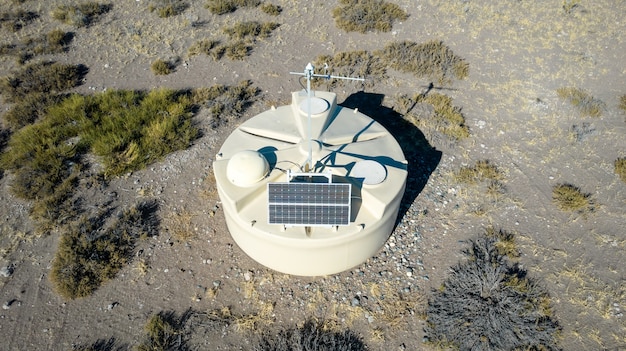
Carbon Capture and Storage (CCS): The Storage Challenge
Once CO2 is captured, it needs to be stored safely and permanently. Carbon Capture and Storage (CCS) involves transporting the captured CO2 to a suitable storage site and injecting it deep underground, typically into geological formations such as saline aquifers or depleted oil and gas reservoirs.
The long-term integrity of these storage sites is crucial to prevent CO2 from leaking back into the atmosphere. Ongoing monitoring and verification are essential to ensure the effectiveness of CCS projects.
What are the Risks Associated With CCS?
There are two major risks associated with using carbon capture technology. These involve the actual process for carbon capturing and potential damages with leaking into the air.
Choosing a geographic location where the carbon capturing takes place should be carefully considered and researched before implementing CCS, in order to assess the best strategy for implementing the carbon solution.
- Leakage: The risk of CO2 escaping from the storage site into the atmosphere.
- Induced Seismicity: Injection can potentially trigger earth tremors.
- High Costs: Transport and storage can significantly add to the costs.
Moreover, the availability of suitable geological storage sites near coal plants can be a limiting factor in the widespread deployment of CCS. Further research and development are needed to identify and characterize potential storage sites and to develop safe and reliable storage technologies.
On balance, CCS is a critical component of carbon capture efforts, but it requires careful planning, site selection, and monitoring to ensure its long-term effectiveness and safety.
Policy and Regulation: Driving the Adoption of Carbon Capture
Government policies and regulations play a vital role in driving the adoption of carbon capture technology. Incentives such as tax credits, grants, and loan guarantees can encourage companies to invest in carbon capture projects.
Carbon pricing mechanisms, such as carbon taxes or cap-and-trade systems, can also create a financial incentive for reducing emissions and deploying carbon capture.
Which Policies Are Needed to Accelerate Carbon Capture Deployment?
Combining the benefits of carbon capturing by using policies, may incentivize people to implement and follow the guidelines of sustainability. Here are the options;
Standards set by governments, combined with the option of using tax incentives, will encourage the deployment of carbon capture technology.
- Carbon pricing: Establishing a carbon tax or cap-and-trade system.
- Tax incentives: Offering tax credits or deductions for carbon capture investments.
- Emission standards: Setting mandatory emission reduction targets for power plants.
International collaboration and agreements are also important for promoting the global deployment of carbon capture. Sharing knowledge, technologies, and best practices can accelerate the development and implementation of carbon capture projects worldwide.
In summary, supportive policies and regulations are essential to overcome the barriers to carbon capture adoption and to unlock its full potential for reducing emissions from coal plants.
Is a 45% Reduction Enough? The Big Picture
While a 45% reduction in emissions is a significant achievement, it’s important to consider whether this is sufficient to meet broader climate goals. Scientists agree that deep and rapid emissions reductions are needed to avoid the worst impacts of climate change.
The Intergovernmental Panel on Climate Change (IPCC) has called for net-zero emissions by mid-century to limit global warming to 1.5 degrees Celsius above pre-industrial levels.
How Does Carbon Capture Fit Into the Broader Climate Strategy?
Using Carbon capture technology can make a difference to help reduce carbon emissions. However, relying on one method alone is not enough. Combining methods, such as renewable energy and low carbon fuels, allow for a greater environmental impact.
The world can benefit from reducing carbon footprint by combining different solutions together.
- Renewable energy: Expanding the use of solar, wind, and other renewable energy sources.
- Energy efficiency: Reducing energy consumption through improved technologies and practices.
- Electrification: Switching from fossil fuels to electricity in transportation, heating, and other sectors.
Furthermore, achieving net-zero emissions will require not only reducing emissions but also actively removing CO2 from the atmosphere through methods such as afforestation and direct air capture.
Ultimately, while carbon capture can play a valuable role in reducing emissions from coal plants, it should be viewed as part of a broader portfolio of climate solutions, rather than a silver bullet.
| Key Point | Brief Description |
|---|---|
| 🌱 45% Emission Reduction | New tech shows strong emission cuts in US coal plants. |
| 💰 Economic Factors | Subsidies and carbon pricing can make carbon capture affordable. |
| 🛢️ Storage Challenges | Safe CO2 storage is crucial to prevent leaks; constant monitoring needed. |
| 政策 Policies & Regulations | Government incentives boost carbon capture adoption. |
Frequently Asked Questions
▼
Carbon capture technology involves capturing carbon dioxide (CO2) emissions from sources like power plants, then storing it underground or using it in industrial processes. The most common method involves absorbing CO2 with solvents.
▼
The primary benefit is the reduction of CO2 emissions from large industrial sources, which helps to combat climate change. Carbon capture can also enable the continued use of existing infrastructure while reducing environmental impact.
▼
The main challenges include the high costs of installation and operation, the energy requirements of the capture process, and the need for secure and permanent storage locations for the captured CO2.
▼
While carbon capture can significantly reduce emissions from specific sources, its overall effectiveness depends on factors such as the capture rate, the energy source used to power the capture process, and the long-term integrity of storage sites.
▼
Yes, alternatives include transitioning to renewable energy sources, improving energy efficiency, electrifying transportation and other sectors, and implementing policies that promote sustainable practices and reduce overall consumption.
Conclusion
The breakthrough in carbon capture technology, achieving a 45% emission reduction in US coal plants, marks a promising step. However, it is crucial to consider this advancement within the broader context of climate change mitigation. While significant, this technology must be complemented by other strategies like renewable energy adoption and policy changes to achieve substantial environmental impact. The path to sustainability requires a multifaceted approach, and carbon capture, though a valuable tool, is just one piece of the puzzle.
